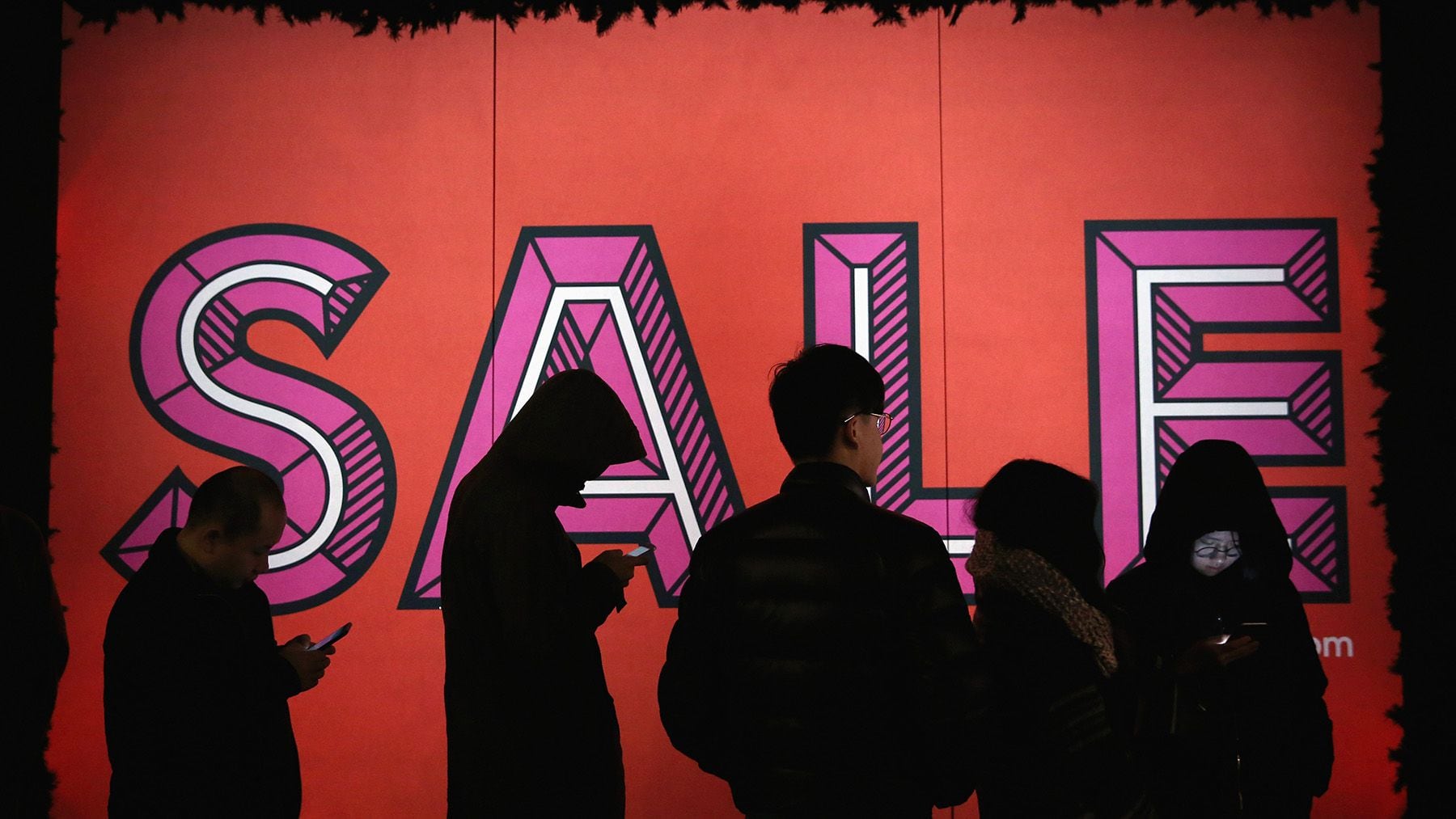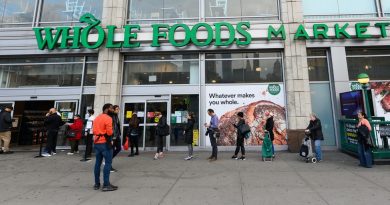Why Some Brands Are Thriving in a Tough Economy – and Others Aren’t
Consumers are getting pickier about where they shop as inflation and a cooling economy take their toll. Some of the biggest names in fashion and beauty no longer make the cut.
Department store chain Macy’s saw its sales fall by 4.6 percent in the final three months of the year, while Levi’s, Michael Kors-owner Capri and Gap Inc. each saw a 6 percent decline. They’re among the lucky ones: Newer brands that thrived during the pandemic, including Olaplex and Allbirds, saw their sales crash to earth, with double-digit percentage drops in revenue.
Persistent inflation, higher interest rates and an uncertain economic outlook are dampening consumers’ mood. Overall retail spending fell 0.4 percent in February from the month prior, but sales of clothing and accessories fared even worse, dropping 0.8 percent in the same period, according to US Census data (department stores saw a steeper 4 percent decline after a strong January).
Even so, the hottest brands still have no trouble attracting shoppers. Crocs, known for its comfortable rubber slides, saw sales expand by more than 60 percent in the fourth quarter. Beauty brand E.l.f. and women’s apparel maker Aritzia grew sales by 49 percent and 38 percent respectively.
Analysts say the outliers have one thing in common: they are able to convey a sense that their products are a good value, whether they’re selling $3 lipstick or $150 running shoes.
“In a world where most people have just cleaned out their closets, they are not going to keep something they don’t love,” said Tiffany Hogan, director of retail insights at Kantar. “If they don’t feel like they are getting value out of it, it’ll go. But if consumers really love their $65 face cream, it’ll stay in the budget.”
Riding the Trend
The fastest growing retailers run the gamut from luxury labels like Hermes and Moncler to fast fashion giant Uniqlo’s parent Fast Retailing and the activewear brand Lululemon, according to a BoF analysis of dozens of publicly traded company results for the fourth quarter.
Many of the retailers that are still flying high build their brand around the promise of quality products, for less.
E.l.f, known for its “dupes” of high-end offerings at drugstore prices reported its 16th consecutive quarter of growth. The brand was able to boost sales by bringing in both its traditional set of affordable beauty buyers as well as those looking to trade down (it’s no coincidence that The Estee Lauder Cos., which sells more expensive makeup, saw sales shrink by 17 percent in the same period).
Canadian clothing retailer Aritzia occupies a higher position in the market — its bestselling “Effortless” pants cost $148. But it’s also well-positioned for a tough economy, catching both aspirational consumers who now find luxury out of reach, as well as those who are looking to cut back on spending and are looking for a relatively chic way to trade down from contemporary labels like Alice & Olivia or Ganni.
“Aritzia … [is] getting a lot of traction because consumers still want to treat themselves,” said Neil Saunders, managing director at GlobalData. “And that’s a great place to be.”
The story with On and Crocs, the fastest and second-fastest growing publicly traded US brand in the fourth quarter, is far simpler: People really want their shoes, and aren’t going to let rising interest rates or a banking crisis stop them from getting them.
The classic clogs are relatively affordable – they’ll set you back $50 at retail. (A pair of On sneakers cost about three times that). But good marketing and splashy collaborations have kept the brands constantly on customers’ social media feeds, meeting their consumers where they are — everywhere.
“[Crocs] have a very loyal customer base, they offer affordable products that are new and fresh every season,” said Gabriella Santaniello, founder and chief executive of A Line Partners. “The question now is whether they can move from being a trend to being a mainstay product.”
In other words, Crocs is looking to avoid the fate of Allbirds or Olaplex, which similarly had seemingly bottomless demand for their products, until suddenly they didn’t.
Customers were starting to get tired of both brands’ signature products even before the economy started to cool. That left them little room to take the usual steps to manoeuvre through a downturn; raising prices in response to increased production costs would only make their products even less popular, and it’s harder to launch a big marketing campaign or expand into new markets during a period of belt tightening.
Olaplex sales dropped by 21.5 percent in its most recently reported quarter, amid growing competition in the prestige haircare space. Allbirds sales dropped 13 percent, as consumers increasingly prefer sneakers sold by up-and-coming brands like On (which saw sales spike by 92 percent in the fourth quarter) and Hoka (Deckers, which owns the brand as well as Ugg, saw a 13 percent increase).
The post-pandemic frenzy for luxury products, meanwhile, may have come to an end as middle-class shoppers in the US run out of pandemic-era savings, but experts say the sector is poised for continued stable growth despite the economic downturn. While Kering posted a small decline in the fourth quarter, many luxury companies, including Hermes, LVMH and Moncler, saw comfortable double-digit growth in the same period. China’s reopening poses a promising bright spot for the category and brands are unlikely to lose the segment entirely as long as they continue to court the customer.
“Consumers, especially in the middle or lower end of the income spectrum, are more likely to limit spending and impulse purchases which fall in the middle of the market,” said Saunders. “But they still want luxury, so they will try to find a way to buy those things.”
Old Problems Return
No one factor unites the 10 worst performing large, public retailers in BoF’s analysis. They include brands that need to rehabilitate their image with consumers (Victoria’s Secret, Gap Inc.) and prestige beauty brands whose customers are trading down or to competitors (Olaplex, Estee Lauder).
Others can blame their troubles on wholesale, which is once again faltering.
Department stores including Macy’s, Nordstrom and Kohl’s had been struggling since long before the pandemic to update their businesses to reflect modern shopping habits. They had a brief resurgence as consumers emerged from lockdown and headed to the mall. But the outlook has darkened again, both for these stores and the brands they carry.
Macy and Nordstrom saw a dip in sales of 4.6 percent and 4.1 percent respectively. Capri, which relies on department stores to sell many of its Michael Kors bags, saw sales drop by 6 percent in the quarter ending Dec. 31.
“Most of the department stores have lost the plot on merchandising … they are not doing a good enough job to curate products in a way that is appealing to the consumer,” said Saunders.
There is a silver lining for brands that were able to reposition themselves by focusing on direct-to-consumer distribution in favour of wholesale. Tapestry, which owns Coach, Kate Spade and Stuart Weitzman saw its sales drop by 5.4 percent last quarter but maintained its profitability: it reported a 4 percent bump in net income by limiting its exposure to department stores, which are far more likely to discount products in order to drive topline sales.


